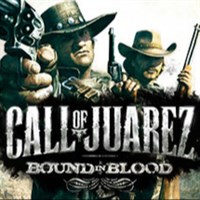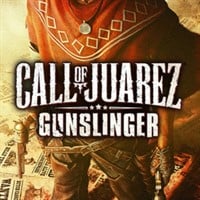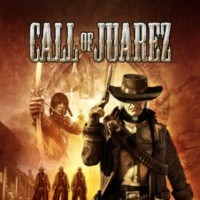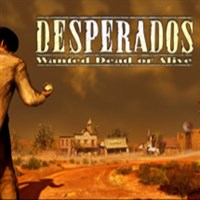Don’t Go West – why developers ignore westerns?
There are really not many alternatives to Red Dead Redemption for players who long for a proper western video-game experience. Most developers seem to look the other way when considering possible settings – and that’s no surprise.
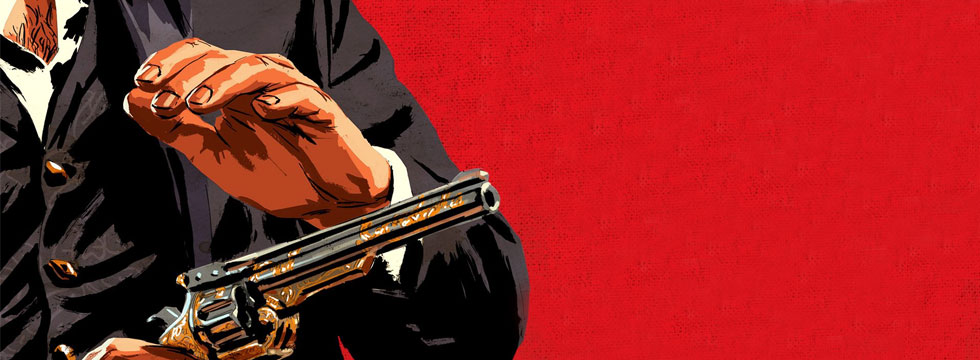
Playing Red Dead Redemption II permanently took me to my happy place. Not merely because the latest project from Rockstar is an amazing game in and of itself, but mostly because it gave me the opportunity to go back to the Wild West – a world that’s as exciting as it is neglected by the biggest video game developers. Good interactive westerns are few and far between, and there are several reasons for that. And the certain success of Red Dead Redemption II can only add insult to injury…
FROM THIS ARTICLE, YOU WILL LEARN:
- When did the popularity of westerns spike in the movie industry;
- Who created the first western shooter;
- When did the theme come back…
- ...and why it’s Rockstar’s fault it died.
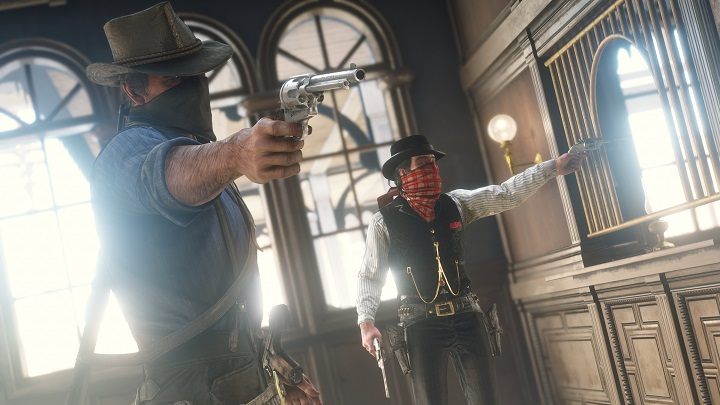
The pioneers of the gaming frontier
Oversupply is not something that ardent fans of western games can complain about. Such state of affairs can be largely attributed to the decline in popularity of westerns in cinemas in the late 70s and early 80s – the time of rapid popularization of electronic entertainment via games such as Breakout and Pac-Man. After the spectacular financial and artistic failure of Michael Cimino’s Heaven's Gate (the movie brought the United Artists studio to bankruptcy), nobody in Hollywood was willing to risk flirting with the genre that was, at that point, pretty much completely exhausted. It seemed much more reasonable at the time to invest in science-fiction movies, which became a cultural phenomenon after the immensely successful premieres of Star Wars, Alien or Close Encounters of the Third Kind, which were all completely different in terms of the atmosphere.
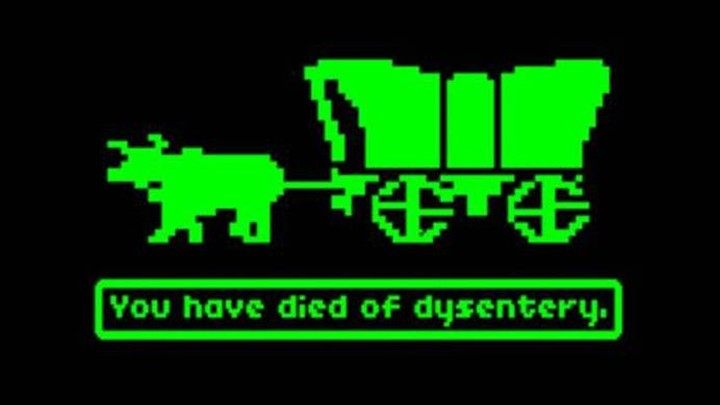
It shouldn’t come as a surprise, then, that the developers weren’t very keen on making games set in the Old West. But there were, of course, some exceptions. Around the late 1970s, a game was released, which older players still remember with a particular kind of nostalgia. The game was called The Oregon Trail and although it was developed as early as 1971, it was, for many years, only available for educational purposes in schools – the game was supposed to teach children about the hardships that the settlers of the American frontier had to endure in the 19th century. An interesting formula of leading your own pioneering expedition through the unwelcoming Great Plains, a healthy amount of procedural events and the abnormally high number of deaths of dysentery allowed The Oregon Trail to quickly sneak out of schools into the public and gain a cult-classic status.
One of the first companies to have messed around with the genre was the Japanese Nintendo. In 1974, Gunpei Yokoi created an electro-mechanical arcade machine with the game Wild Gunman. The players used a gun-shaped controller and participated in duels at high noon. 10 years later, the game made it to the Famicom console, where players could use the light gun. It was possibly the first western shooter in history.
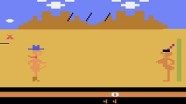
When the 80s came about, the gaming industry received another high-profile western. Unfortunately, this time the publicity was caused not by the high quality of the game, as it was the case with The Oregon Trail. Custer’s Trail by Mystique studio was simplistic, and that’s one thing. It was also so outrageous that it could only have been released in the 80s. The goals of the game were as follows: avoid arrows, make it to the pole on the right side of the screen and rape the Indian tied to it. Many organizations fighting for the rights of women and Ingenuous Americans raised a huge outcry and the game was promptly removed from the stores. Still, more than eighty thousand copies were sold. As concerns the studio itself, it didn’t survive the slump of 1983, having released a few borderline-8-bit-pornography games. Godspeed.
Up until the 21st century, the westerns were a niche in the gaming industry. Some developers took the risks with this moderately popular (to say the least) genre, which yielded various results. Wild ARMs was released in 1996 – it was an intriguing mix of a western feel with the formula of jRPG. The game performed well enough in Japan to receive a few follow-ups. Then, there was Outlaws by LucasArts – a game that didn’t become a huge commercial success, but which left a significant mark on the FPS genre, introducing features such as zooming through a telescopic sight of a sniper rifle.
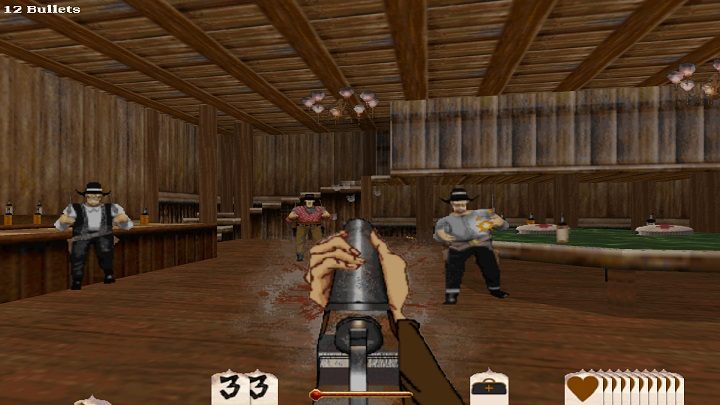
DESERTS AND PRAIRIES
Another reason for the limited popularity of western in the era of the first shooters were the technological shortcomings. It was easier to set the game in narrow corridors (Doom, Wolfenstein), rather than in bigger, open areas of the American prairie.
Back to the West
The developers started looking more favorably at the Old West with the beginning of the 21st century. The genre was first dusted off with Desperados: Wanted Dead or Alive, an RTS by Spellbound Entertainment. But the real outpour of westerns broke out between 2004 and 2005: Dead Man’s Hand, by Human Head Studios, the guys that later gave us Prey; Red Dead Revolver; a mix of western and horror by Darkwatch, that was even supposed to get a movie adaptation at one point; Gun, the first romance of western with open-world; and Oddworld: Stranger’s Wrath – all of the above were released within just two years, but they all managed to achieve at least decent commercial success and satisfactory scores.
BETWEEN SKATEBOARD AND GUITAR
Gun, mentioned above, was created by Neversoft, i.e. the creators of the Tony Hawk series. After this quick detour into the world of action games, the company bought off the rights to Guitar Hero from Harmonix and developed a few installments of the popular music game. A few years later, what was left of Neversoft after significant downsizing was merged into Activision’s Infinity Ward studio.
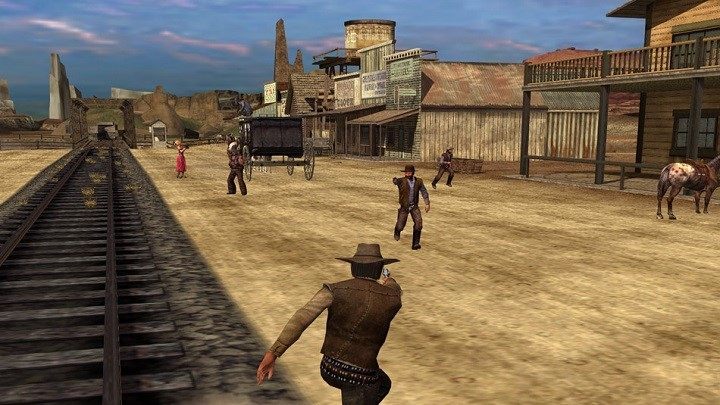

The first decade of the 21st century also brought about a renaissance of the western in cinema, which is arguably still ongoing today. Starting with the premiere of the critically-acclaimed The Proposition (2005) the genre slowly started reclaiming big names, directors, and audiences. The outcome were pictures such as 3:10 to Yuma with Christian Bale and Russel Crowe, Appaloosa with Ed Harris and Viggo Mortensen, The Assassination of Jesse James by the Coward Robert Ford with Brad Pitt, and Cohens’ True Grit that received 10 Oscar nominations. Then, in recent years, we’ve also seen Quentin Tarantino taking the genre and giving it his own, unique, pastiche spin in Django and The Hateful Eight.
Of course, when talking about game westerns, we also need to mention the Polish series Call of Juarez, by Techland. The first installment, released in 2006, stood out with two playable characters that offered entirely different playstyles. The game wasn’t a smash hit, but it managed to sell enough copies to allow releasing a prequel three years later (Call of Juarez 2: Bound in Blood), which was a significantly bigger success – both in terms of review scores and sales figures – and remains one of the best-rated games from Techland. Too bad the third part of the series, The Cartel, abandoned the western setting and told a story of modern-day drug cartels.
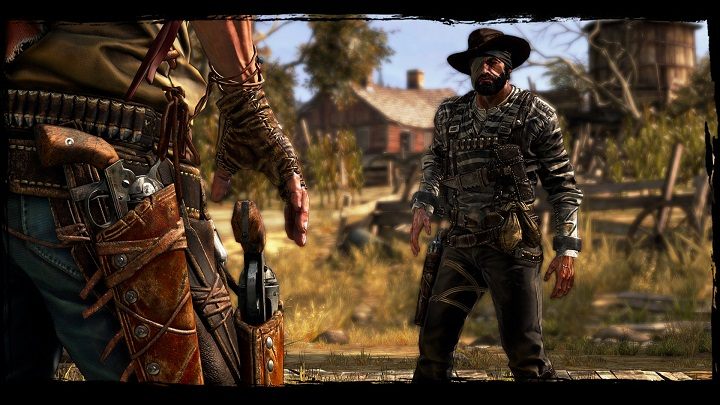
This Town Ain't Big Enough for Both of Us
Was that really a left-field move? Western games were flourishing for a couple years, but the end came abruptly in 2010. Not in the least because the players weren’t interested. Rockstar simply entered the market like an outlaw enters a gloomy saloon and started a shoot-out that left no survivors. Red Dead Redemption was univocally named the best virtual western ever, which consequently abolished the brief renaissance of western in video games. Meticulously constructed narration and characters, a beautiful, detailed and open world, a myriad of additional activities, and the unmatched atmosphere – the Rockstar’s game had it all. The American studio instantly cemented its position as the quickest hand in the virtual Wild West; no wonder other developers weren’t keen on picking up the gauntlet and would rather focus on games that wouldn’t have to compete with the Goliath.
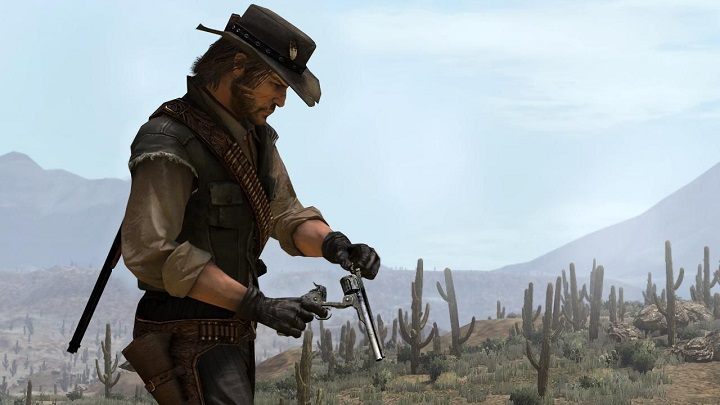
Hence the argument that the inevitable success of Red Dead Redemption II could bring some nasty repercussions for the entire genre. Now, after the release, we know that the game is a complete cowboy experience – the vast and open swaths of land of the Old West, where players get both great freedom in crafting their own story, and an epic tale straight from a spaghetti western. And since the studio consists of some of the most talented people in the industry and has access to a budget that other developers can only dream of, it’s rather difficult to imagine anyone attempting to directly confront Rockstar without being completely decimated.
OR PERHAPS…?
On the other hand, the colossal success of the GTA series did not deter the competition – quite the opposite. In recent years, we’ve had such open-world city adventures as Sleeping Dogs, or the Watch Dogs and Saints Row series.
And even though that’s perfectly reasonable, it’s also harmful to the players, who either don’t have a console or would prefer a more linear experience that doesn’t demand dozens of hours on end to be completed. Simply put – a current-gen Call of Juarez, that could be finished in two short afternoon sessions. It’s hard to tell whether Techland has any intention of returning to the series that allowed them to establish a confident position in the industry – so far, and as far as we know, all their efforts have been focused on Dying Light 2 – the follow-up to their most successful game.
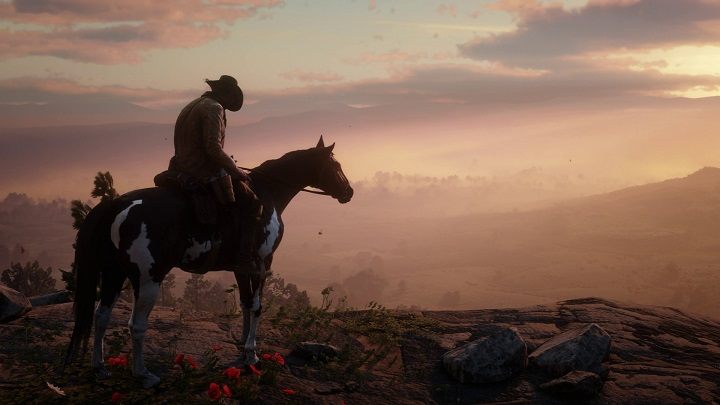

And what about those keen on multiplayer? It looks like they will have to wait for a full-blown online western experience until November, and the release of Red Dead Online. Unfortunately, Wild West Online, which was supposed to challenge RDRII on the multiplayer ground, so far seems like a flop, with more than a half of Steam reviews being negative.
The quickest guns of the Old West
Other developers are also not terribly excited about creating a western because this genre comes with a set of constraints that aren’t present in case of action games set in modern times or the future. Just take a look at the late 19th-century arsenal – apart from Gatling guns, which are not exactly the ideal sidearm for a saloon shoot-out, most American weapons of the time were either lever-action rifles, or the iconic, six-shot revolvers. One of these weapons warrants creating a shooter that would be as dynamic as the likes of Call of Duty – it’s not impossible, but it certainly isn’t simple.

“God Created Men and Sam Colt Made Them Equal”
One of the inseparable associations evoked by the western are revolvers. Their popularization, in turn, can be largely attributed to Samuel Colt, who patented this type of guns in 1836. With incremental upgrades, the gunsmiths were eventually able to deliver such models as Walker, 1851 Navy, Peacemaker, and New Line.
Red Dead Redemption 2 is set in 1899. At the time, Colt’s model 1898 was very popular in the entire United States, and at the same time, a semi-automatic Mauser C96 was also available. We’ve already seen that gun in the first RDR.
Then, there’s the story. Interactive westerns are strongly rooted in the movie tradition, which has severely exploited most themes and cowboy archetypes – how many people are interested in another story about avenging the protagonist’s lost loved ones, killed by bandits; about a gang of audacious outlaws and their daring heists or a struggle to start a new, normal life? Not many, I can tell you. Narrative westerns, both in video games and in film, have some serious limitations in terms of the motives they can utilize (especially nowadays, when depicting the conflict between the settlers and the Native Americans would have some very serious, political implications). Hence, every writer that attempts the creation of a story about cowboys and sheriffs has to face a real minefield of clichés.
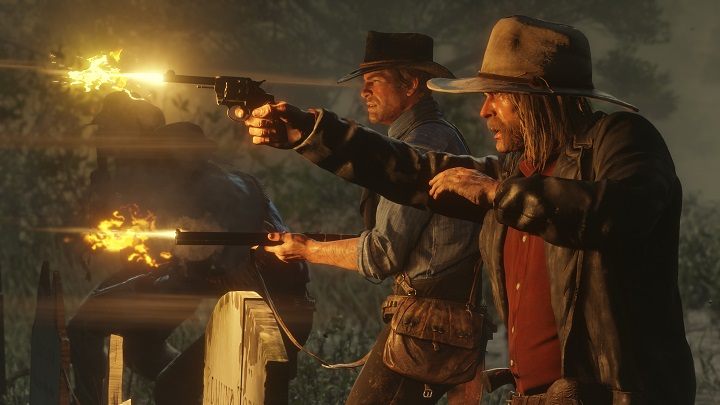
The people enamored of the romantic vision of the Old West in any shape and form have to come to terms with the sad reality: a domination of this genre akin to the one from the 1950s in film isn’t a real possibility. It’s actually even unlikely that it will become noticeably more popular anytime soon – the upcoming big release from Rockstar is looking like a game that will deter any potential competition with its sheer volume.
Maybe it’s for the best, though. Complaints about the flooding of Steam with underdeveloped games are quite popular, so maybe it’s better to have a few, rare gems, rather than a swarm of worthless clones. And it turns out that me crossing fingers for Rockstar’ Red Dead Redemption II becoming their opus magnum turned out to be exactly that – a masterpiece, after which the only reasonable thing for the devs to do will be to ride into the sunset.

